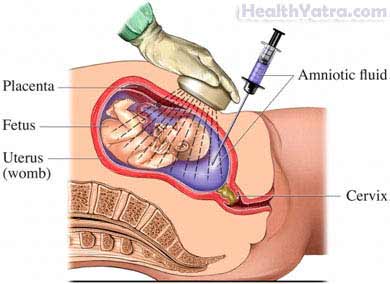Definition
Classic galactosemia is a metabolic disorder. It causes a low level or lack of an enzyme galactose-1-phosphate uridyltransferase. This enzyme changes galactose to glucose. Galactose is a simple sugar found in milk products. Glucose is the usable form of sugar in the human body.
Since there is not enough of the enzyme, galactose builds up in the blood. This build up can cause severe damage to the liver, kidneys, central nervous system, and other body systems. If undetected, galactosemia is fatal.
A less severe form of this disease is due to low levels of a different enzyme. This type may be managed with a few dietary restrictions. It does not carry the risk of neurologic or liver damage. This sheet will focus on classic galactosemia.
Causes
Galactosemia is a genetic condition. It is caused by faulty genes that are inherited from both parents. A normal copy of these genes is needed to make the enzyme correctly.
Risk Factors
The primary risk factor is having parents who carry the gene for galactosemia.
Symptoms
An infant with classic galactosemia usually appears normal at birth. Symptoms usually occur within the first few days or weeks of life after the baby drinks breastmilk or a lactose-containing formula.
Early symptoms may include:
- Jaundice (yellowing) of the skin and whites of the eyes
- Vomiting
- Poor weight gain
- Low blood sugar (hypoglycemia)
- Feeding difficulties
- Irritability
- Lethargy
- Convulsions
If left untreated, later symptoms and complications may include:
- Opaque lenses of the eyes ( cataracts)
- Enlarged liver, enlarged spleen
- Intellectual disability
- Sepsis caused by a specific bacteria ( Escherichia coli)
- Cirrhosis (scarring of the liver), liver failure
- Kidney problems
- Swelling of the extremities or abdomen
If diet restrictions are started immediately, it may be possible to prevent acute toxicity. However, long-term complications may still occur. These may include:
- Poor growth
- Learning disabilities
- Speech and language problems
- Fine and gross motor skill delays
- Ovarian failure
- Cataracts (usually regress with dietary treatment, leaving no residual visual impairment)
- Decreased bone mineral density
Diagnosis
Most US infants are screened for galactosemia at birth. A small sample of blood is taken with a heel prick. It is also possible to diagnose galactosemia during pregnancy with an amniocentesis. This test is only done if the baby is at high risk for an illness or condition.

Your doctor may also be suspect galactosemia after a urine test. The diagnosis can be confirmed with a blood test or with a biopsy of the liver or other tissues.
Treatment
Galactosemia cannot be cured. Steps can be taken to prevent or minimize symptoms and complications.
Diet
Avoid all products that contain or produce galactose. This includes milk or milk by-products, such as:
- Milk
- Casein
- Lactose (milk sugar)
- Dry milk solids
- Curds
- Whey
Galactose can also be found in some non-milk products, such as:
- Fermented soy products
- Legumes
- Organ meats
- Hydrolyzed protein
Lactose or galactose may be used as an additive in some food products. Therefore, always read food labels carefully in order to avoid these foods. A dietician with a specialty in galactosemia can help make a dietary plan.
Medications
Certain medication have galactose or lactose fillers. Check with your pharmacist before using medications.
Supplements
Avoid supplements unless prescribed by your doctor. Fillers and inactive ingredients, like galactose are not required to be listed in supplements. If you do take a supplement, ask your pharmacist if there is galactose or lactose in the product.
Prevention
There is no known way to prevent galactosemia. You may consider genetic counseling, if you have galactosemia or have a family history of the disorder. The counselor can help you determine the risk of passing the condition to your children.
